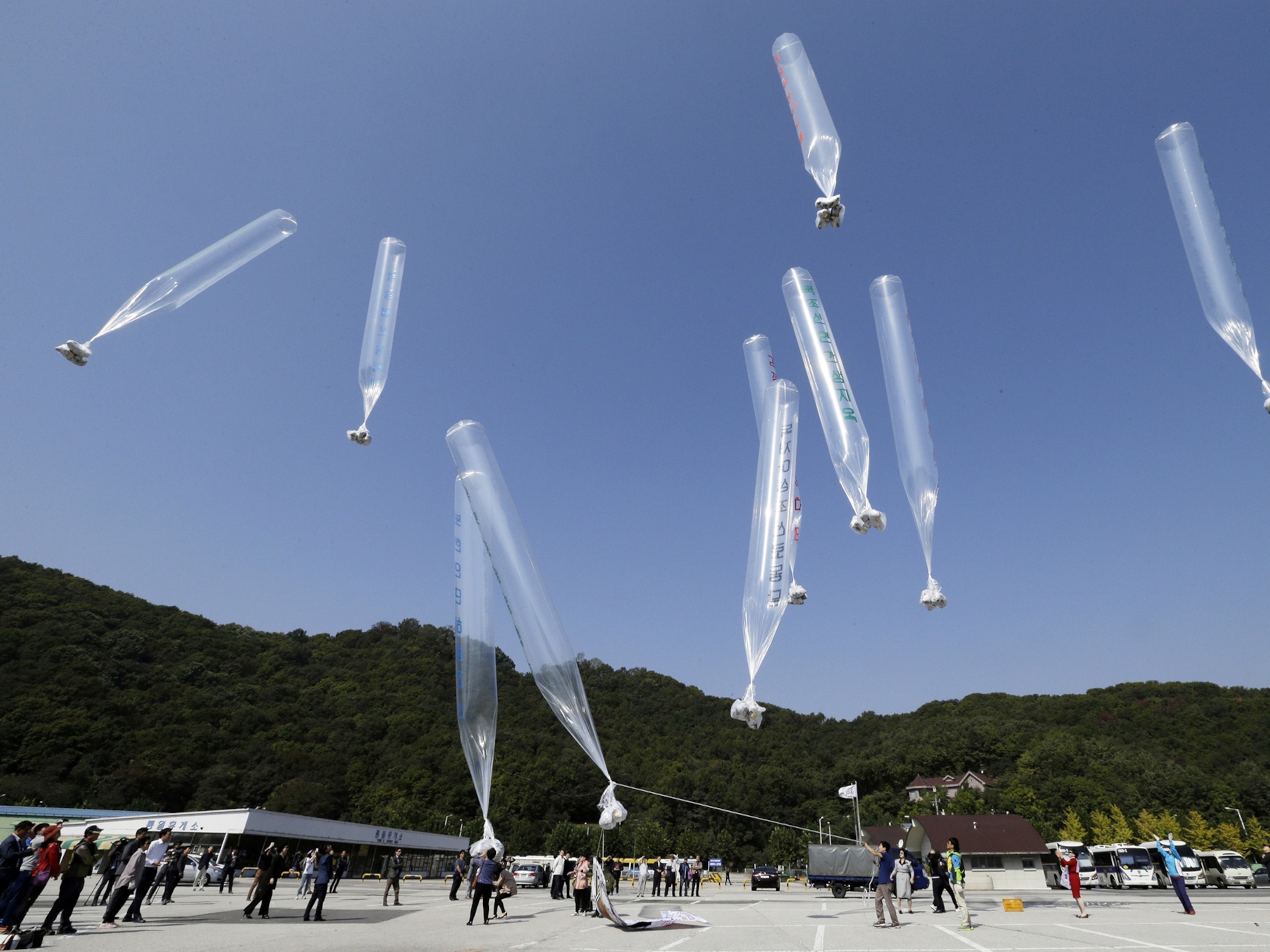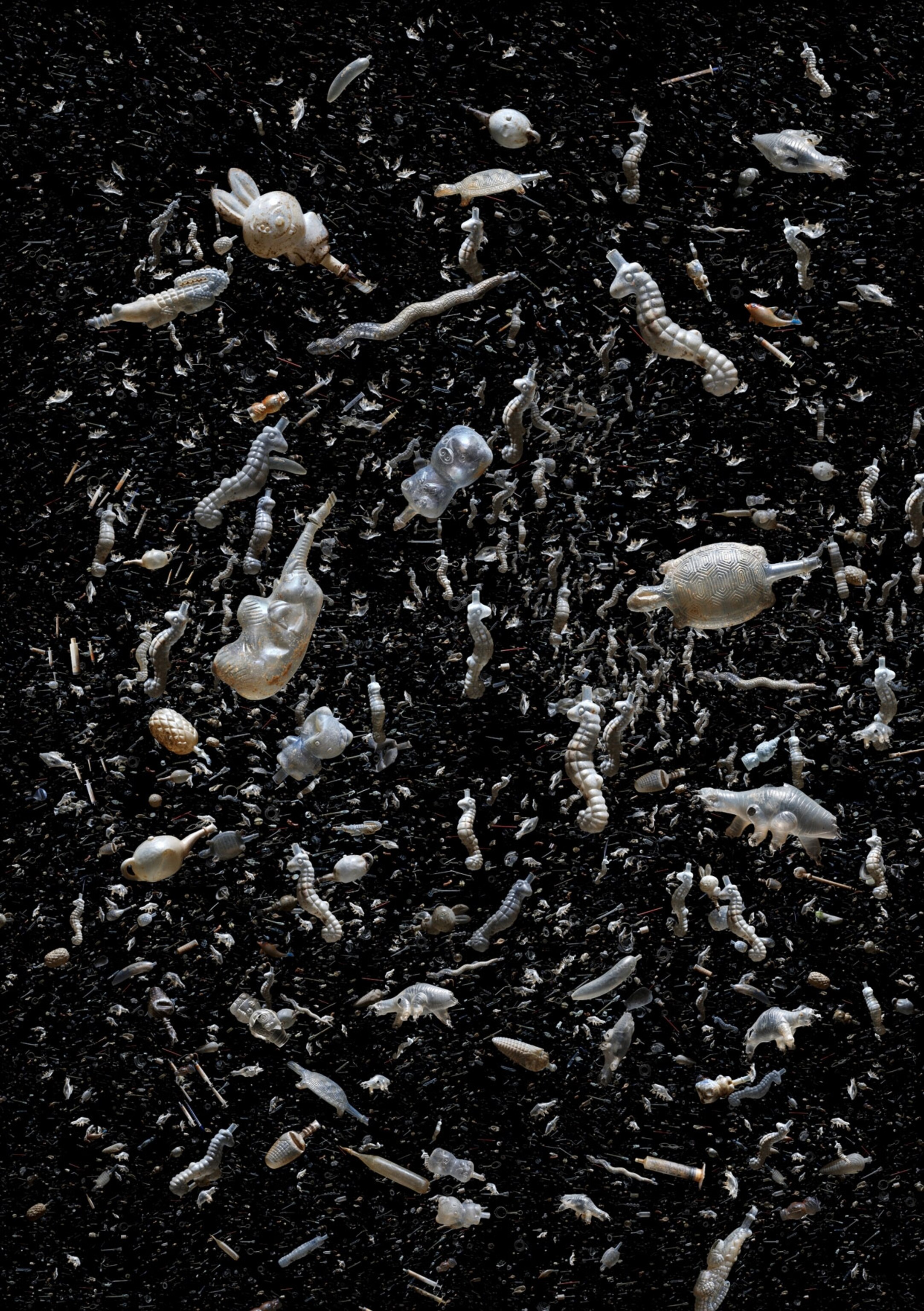
These Photos Are Total Garbage. You’ll Love Them.
Earth Day is Friday, April 22, and Proof is celebrating all week. This is the third post in a five-day series about our planet.
When British photographer Mandy Barker headed home from a trip to Hong Kong, she brought a suitcase full of trash with her. She keeps trash in her greenhouse, and she also stores trash in her basement drawers, catalogued by the date it was collected and what beach she found it on.
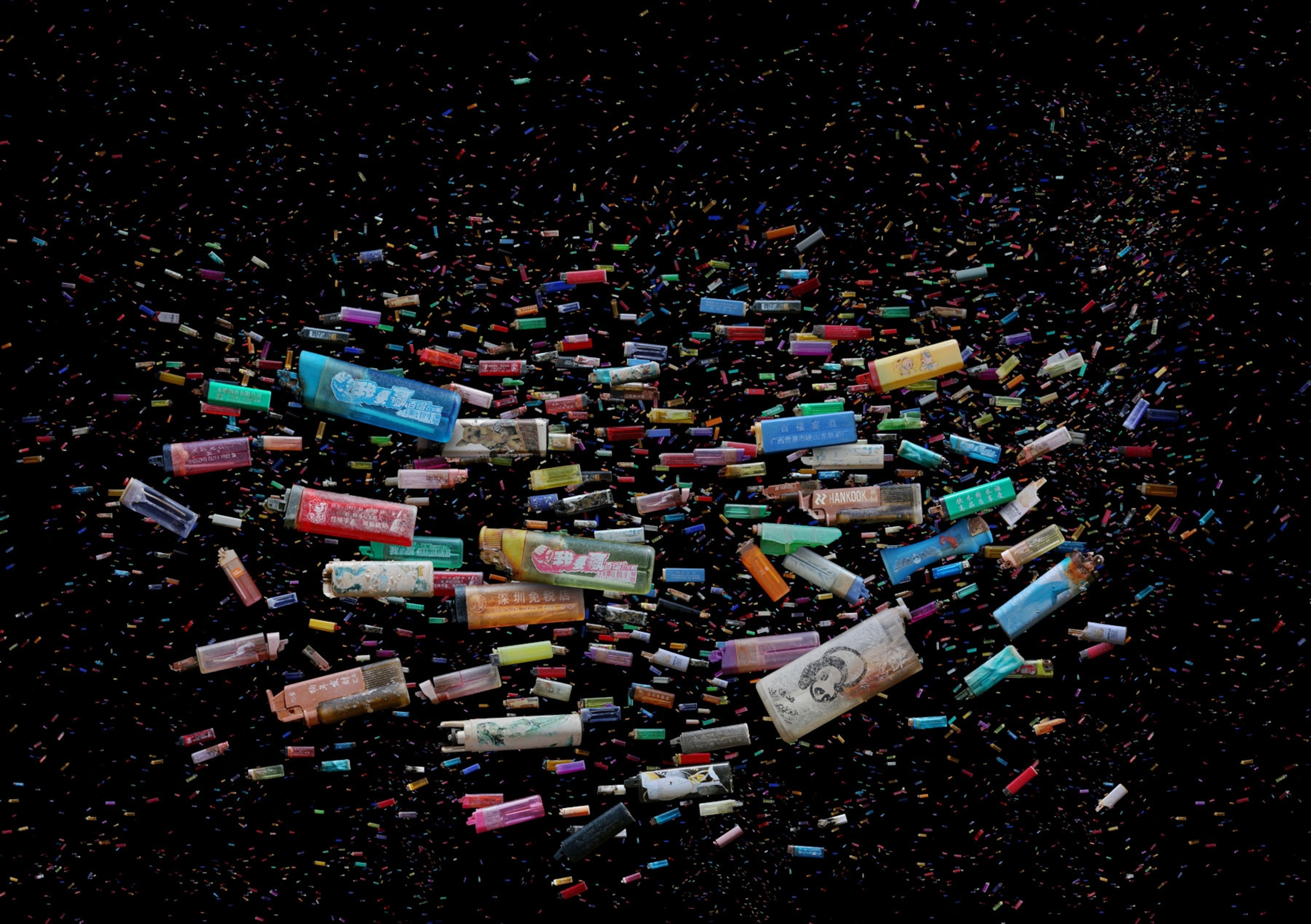
Her litter habit started back in 2012, when she went on an expedition to the Great Pacific Garbage Patch to track debris from the 2011 Japanese tsunami. The crew was a mix of laypeople and scientists studying how materials like plastic move through the ocean, how long they take to decompose, and how they’re colonized by marine life.
Aboard the ship, one of her fellow crew members told her about Hong Kong’s epic problem with plastic bags—an apparently relentless scourge on its beaches. The scale of the problem moved Barker. “I knew there and then that this would be my next project,” she says.

So when she visited Hong Kong to speak at an environmental conference in 2013, she came ready to get her hands dirty. It was over that ten-day trip that she salvaged most of the source material for her images—the trash she now stores in her home.
Barker found plastic knickknacks on Hong Kong’s beaches just as easily as you’d expect to find seashells. “There were certain objects that littered every beach: for example, polystyrene and cigarette lighters,” she says. She began noticing patterns in the rubbish—items that spoke to tradition, culture, and consumption in Hong Kong.

At first she tried photographing the trash on the shore where she found it. But people simply weren’t interested. “They had seen these sorts of images before, and it just didn’t hold their attention,” she says.
So she got a little more creative, sorting her findings into groups—action figures, artificial flowers, and plastic sticky rice packages gathered en masse. Each became the focus of individual images that she creates and photographs in a studio, arranging the recovered plastic—”unwashed and unaltered from the beach”—against a black background and photographing it according to size. “Smaller pieces first, then the medium-sized pieces, followed by larger objects,” she says. These separate layers are then sandwiched together into one image in Photoshop.
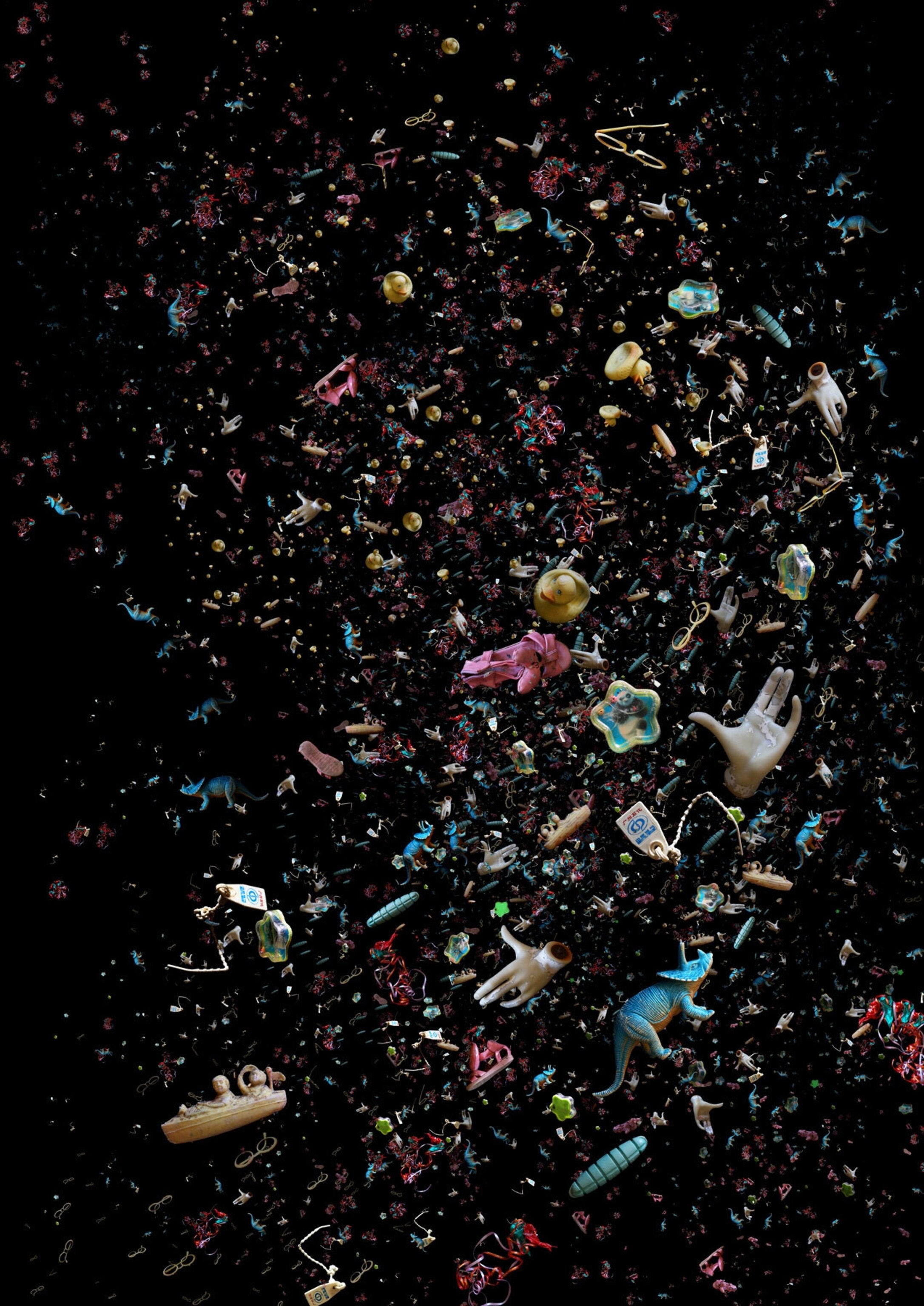
Her goal became to make images beautiful enough that people would take the time to wonder what they’re made of and what they mean.
She uses statistics to bolster the impact of her swirling compositions.“Fifty-two tons of polystyrene diningware [goes] into landfills every day in Hong Kong,” Barker says, quoting Hong Kong’s Environmental Protection Department’s 2012 statistics. Her image “Polystyrene” illustrates that. In Hong Kong, she says, “polystyrene pieces or particles litter every beach.”
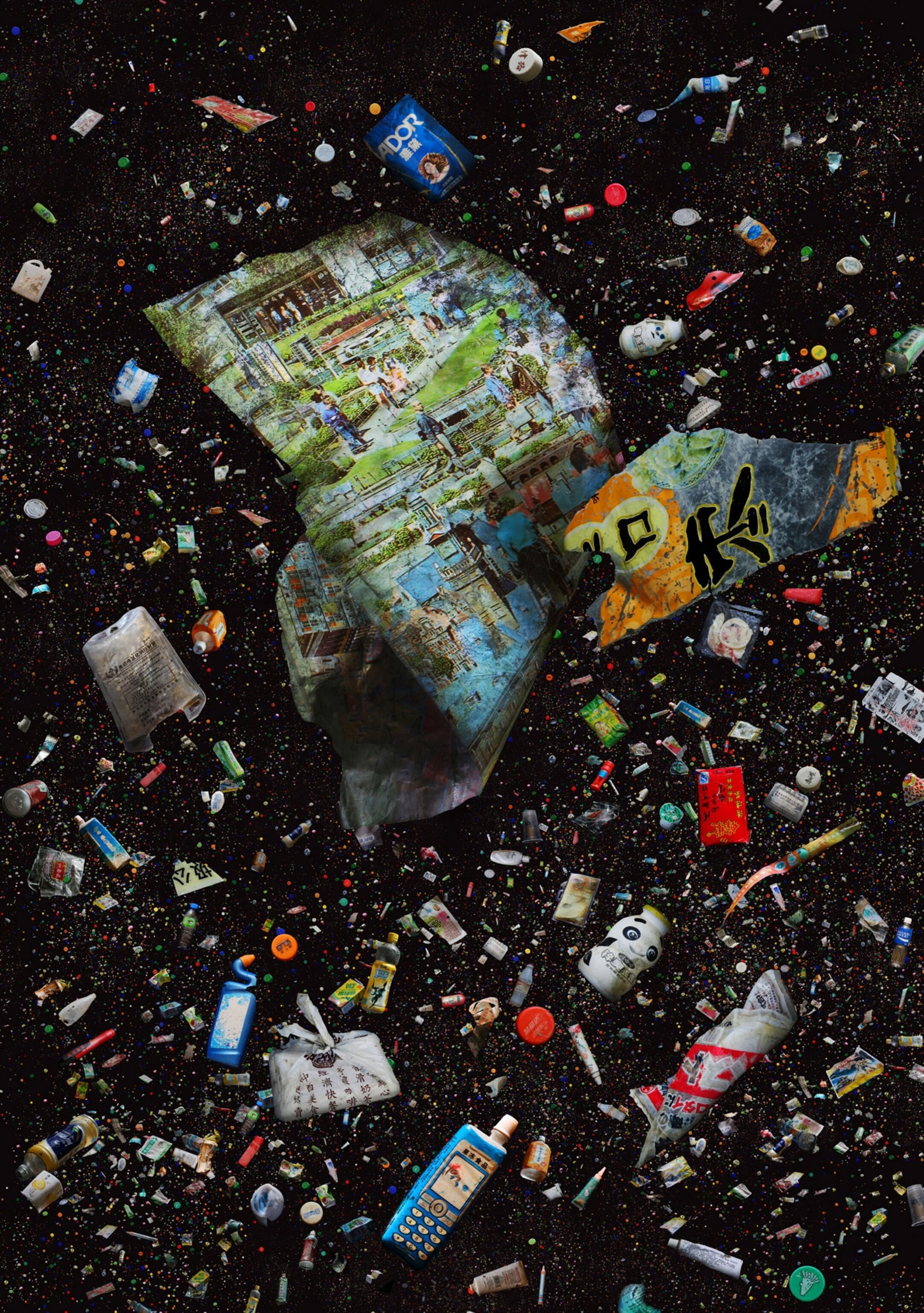
Hong Kong definitely has a trash problem. Their “three main landfill sites are estimated to be full by the end of the decade,” Barker says. But they’re by no means the only offenders. Ocean trash everywhere is on the rise, which is bad news for our waters, for marine life, and for us.
Plastic debris in the ocean can entangle, suffocate, and starve marine life (when they fill their stomachs with it). And plastic particles, which can last up to 500 years, absorb toxic chemicals, which then make their way into the ocean’s food chain—and into ours.
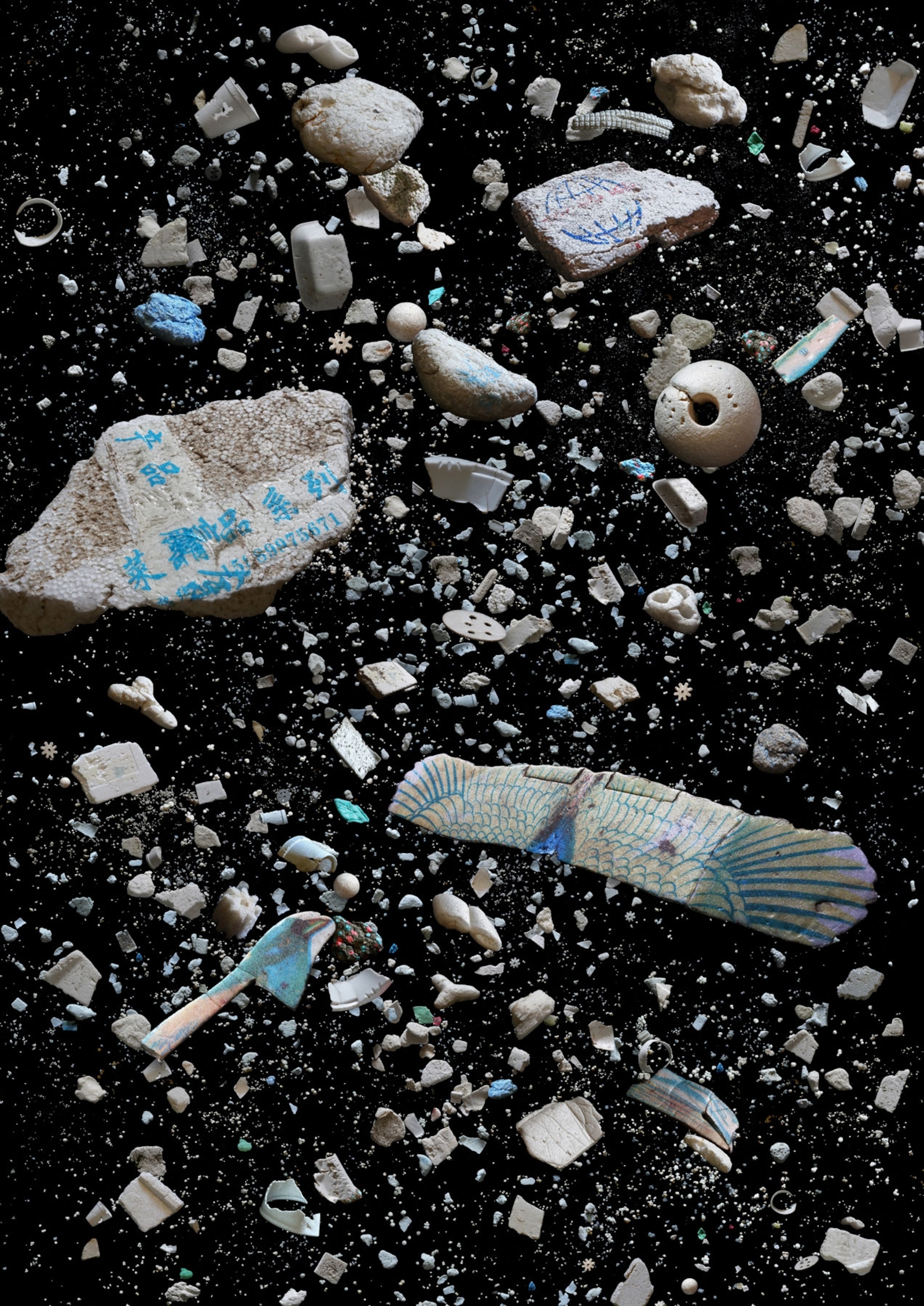
This is the uncomfortable truth underlying Barker’s colorful, cosmic pictures. “I want people to be shocked by what they see in my images and to think about their own plastic consumption,” she says. “If people remember what they have seen in my work … [if] when they are brushing their teeth at night, they remember seeing and reading about a toothbrush found in the stomach of an albatross chick, then this will have reached my aim.”
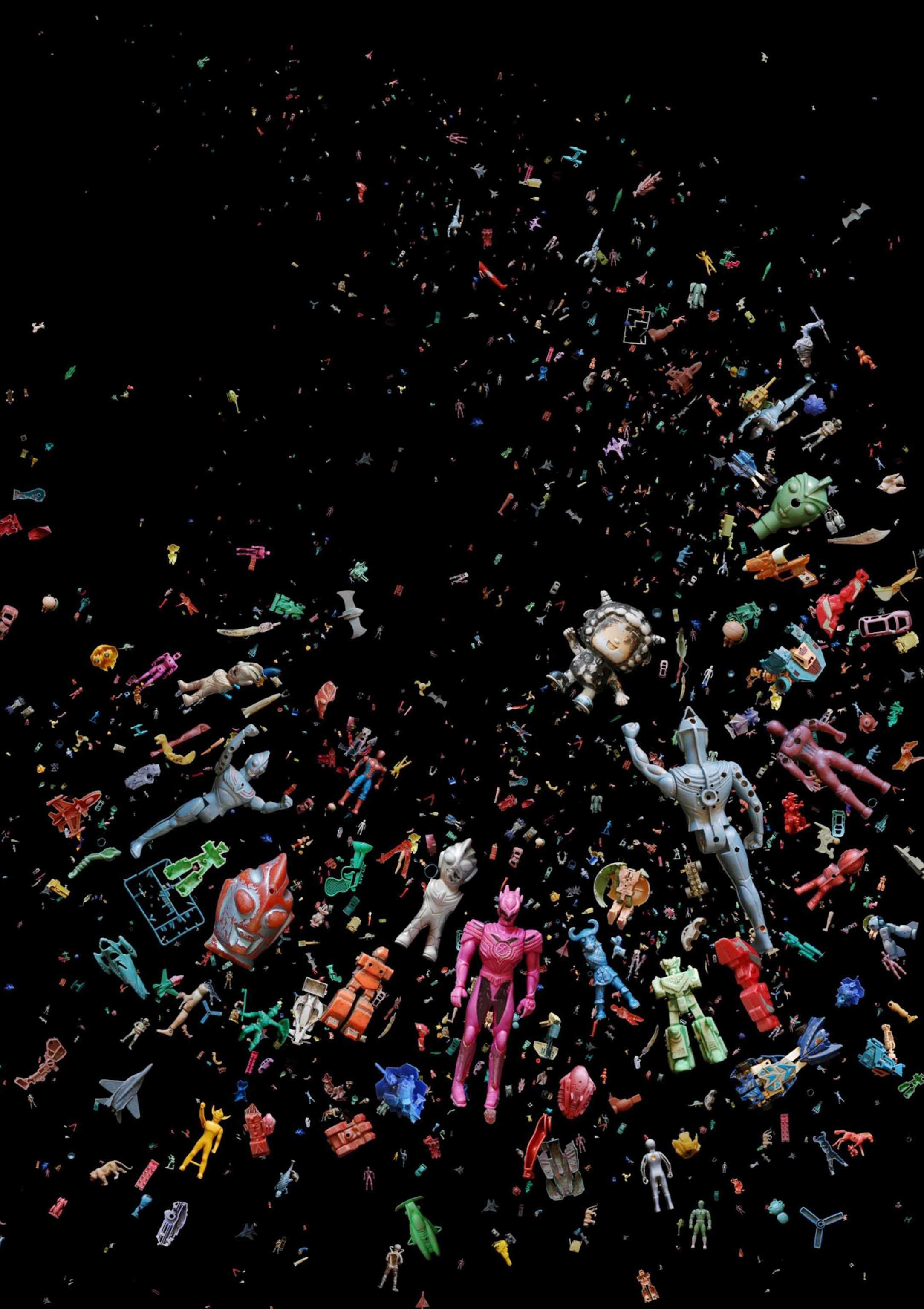
It sounds harsh, but Barker realizes that even just inspiring one person to refuse a plastic bag on their next trip to the grocery store is a small action that could eventually become a habit, and, if adopted on a large scale “it would make a huge difference.”
She’s also realized that in order to influence people’s actions, you have to catch their eye in the first place—to draw them in, captivate them, and make them wonder.
See more of Mandy Barker’s work on her website.

